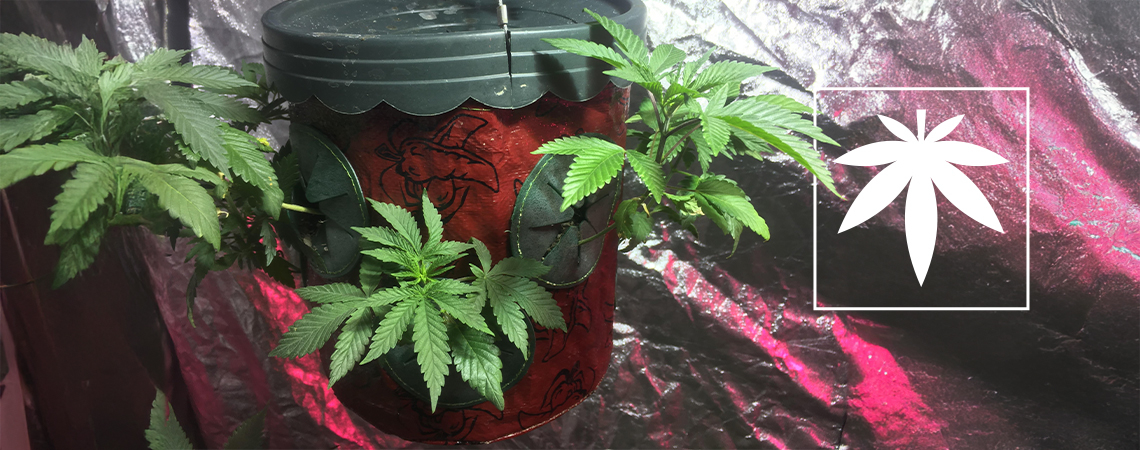
Growing Cannabis Upside Down
Fancy flipping things on their heads and growing your weed upside down? Not only can it look cool, but it can have real advantages too! From increased yields to greater pest resistiance, this method may not be for everyone, but it does have its place.
If you’re looking for an unusual and decidedly modern way to grow your cannabis, we might just have the answer for you! Inverted cultivation, or growing cannabis upside down, is a fairly new way to grow weed that isn’t just about turning cultivation on its head; it has some real benefits too. This unconventional growing method is gaining popularity among cannabis enthusiasts, and for good reason.
In this article, we explore inverted cannabis cultivation and ask what benefits and downsides it presents, as well as how you can get started with your own upside-down cannabis garden.
What is inverted cultivation?
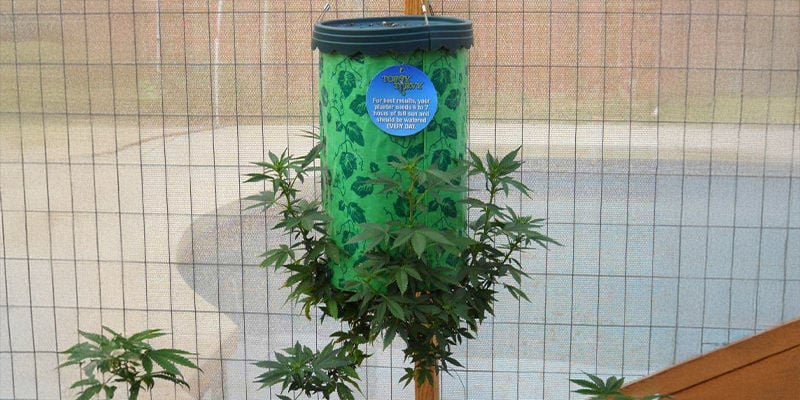
Inverted cultivation, also known as upside-down growing, is a novel approach to growing in which plants are suspended with their roots at the top and their stems and leaves hanging downward.
This technique isn’t the work of some stoned grower who got bored with growing terrestrially. Rather, it’s been around for quite some time and has been applied to various plants, including tomatoes (which grow similarly to cannabis), and is now being employed in cannabis cultivation. The general idea is to maximise space, reduce pests, and potentially increase yield.
What are the benefits of growing cannabis upside down?
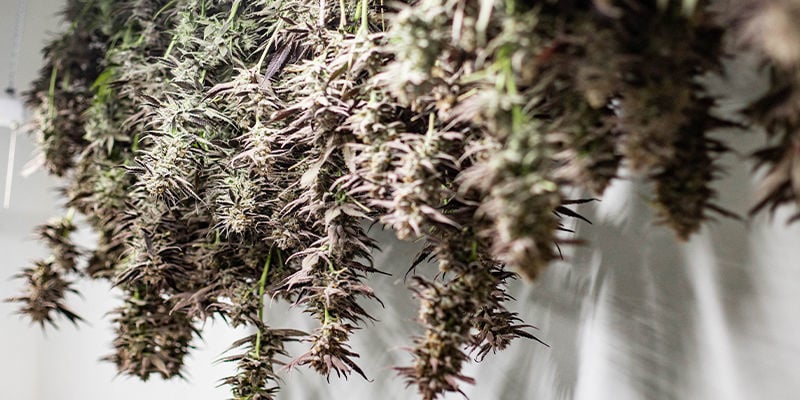
Inverted cultivation offers several potential benefits, such as:
- Space efficiency: Growing plants upside down can save space, making it ideal for small grow rooms and spaces.
- Reduced pest issues: With the plant’s foliage hanging freely, it's harder for ground-dwelling pests to infest the plants, as they need to get up there first!
- Improved air circulation: Hanging plants have better air circulation around the foliage, which can reduce the risk of mould and mildew. This can generally increase plant health and reduce the risk of fungal and bacterial issues.
- Easier access: Harvesting and maintenance can be easier, as the plants are hanging at a convenient height, meaning you don’t need to bend over so much to access them. Especially for larger grows, this can end up being quite convenient.
- Increased light exposure: When suspended, plants can receive more uniform light distribution, potentially enhancing growth and encouraging the even development of bud sites, which generally improves yield as a result.
Potential downsides of upside-down cultivation
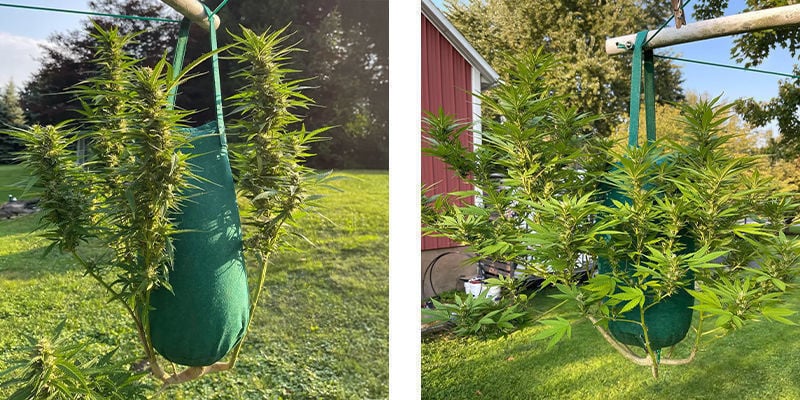
While there are benefits, growing cannabis upside down also has some drawbacks. We wouldn’t recommend this method to beginner or casual growers. It’s most suited to hobbyists who fancy trying out a different cultivation method. Here are some of the downsides:
- Structural support: Cannabis plants may require additional support to prevent stems from breaking due to the unnatural growing direction.
- Watering challenges: Ensuring adequate watering and nutrient delivery can be more complex, as gravity works against the natural flow to the roots. You will therefore need to rig up some kind of special watering system. This could be hydro/aeroponics or hand-watering, as we’ll explain below.
- Plant stress: The unusual orientation might cause stress to the plants, potentially adversely affecting their growth and yield.
- Setup complexity: The initial setup for inverted cultivation can be more complicated and time-consuming compared to traditional methods, such as growing upwards in soil. For this reason, it is a lot of effort and should only be attempted by those who are genuinely motivated.
How to grow cannabis upside down
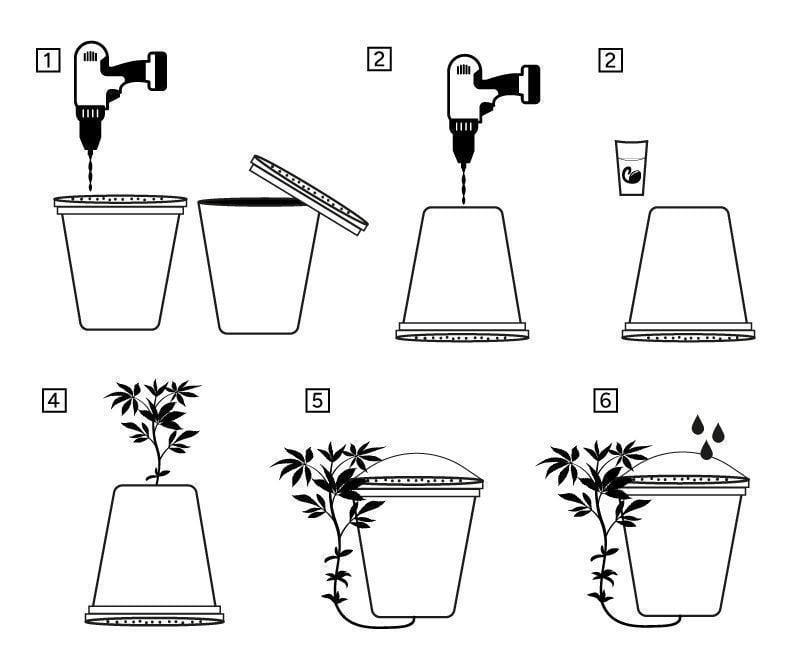
If you feel the pros outweigh the cons, or you’re just curious, here’s an overview of how to grow inverted weed. However, if you really intend to go through with an upside-down grow, check out a range of sources to figure out which methods might work best for you. This cultivation method is something of a work in progress, and will vary depending on your specific setup.
Equipment
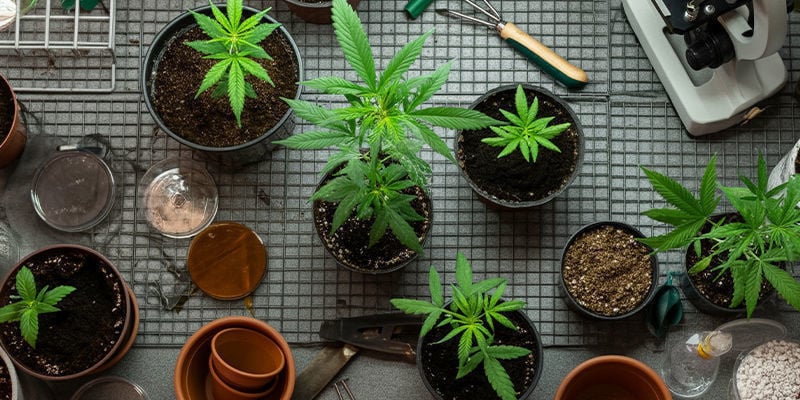
- Hanging planters or buckets: Ensure they are sturdy enough to hold the weight of the plants and soil
- Strong hooks or brackets: These will secure the planters in place
- Potting soil: High-quality soil to provide nutrients
- Cannabis seeds
- Watering system: Consider drip irrigation for consistent moisture delivery
- Support structures: Stakes or trellises to support the plants as they grow
- Drill
- Lights (if growing indoors): Vertical lights are better than hanging lights, though both could work
Directions
- Prepare the planters: Drill holes in the bottom of your planters or buckets for the stems. The holes should be big enough for a mature cannabis stem to grow through.
- Germinate: You should germinate your weed seeds as you would normally.
- Insert seedlings: Now, gently place your cannabis seedlings through the holes you drilled in the bottom of your pots/planters, allowing the stems to hang downward.
- Secure the planters: Use strong hooks or brackets to hang the planters securely in your grow area, with the seedlings hanging downwards.
- Fill with soil: Carefully fill the planters with high-quality potting soil, ensuring the roots are well-covered.
- Set up support structures: Position stakes or trellises to support the growing plants and prevent breakage. These can be adjusted as the plants grow.
- Set up lighting: Now, set up your lighting. If using vertical lights, then you can just place them throughout the space, beside the plants. If using hanging lights, then you’ll need to stand them facing upwards on some kind of surface below the plants. You will also need to be able to lower this surface as the plants grow downwards.
- Watering: Implement a drip-irrigation system or water manually. If watering manually, ensure that you can easily lift the watering can to the necessary height.
- Monitor and adjust: Keep an eye on your plants, adjusting support structures and watering as needed to promote healthy growth.
Upturn everything you know about growing cannabis
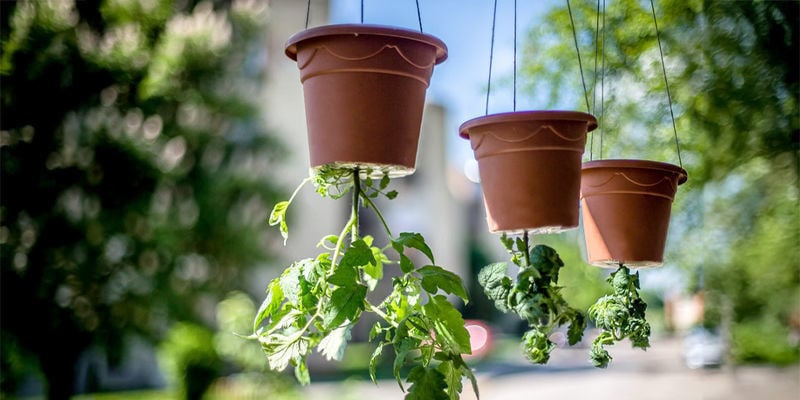
If you fancy inverting your next crop, then it is absolutely possible! It’s not even the most challenging endeavour in the world, although we wouldn’t advise it for those who aren’t genuinely intrigued, as it involves significantly more effort than normal growing. There are many variations of this technique out there, and the one we’ve outlined is among the simplest and most accessible. However, it can get far more inventive, so don’t be shy to look around or come up with your own wild methods. Good luck!
-
 4 min
30 July 2024
10 Most Unusual Places To Grow Cannabis
Cannabis is known for its ability to be grown virtually everywhere. Buckle up and learn about the ten most unusual places cannabis has been grown. From historical homes to underground bunkers,...
4 min
30 July 2024
10 Most Unusual Places To Grow Cannabis
Cannabis is known for its ability to be grown virtually everywhere. Buckle up and learn about the ten most unusual places cannabis has been grown. From historical homes to underground bunkers,...
-
 3 min
23 July 2024
Cultivating Cannabis In Space
Space exploration, you might be surprised to discover, has included experiments to find out how cannabis grows in low-gravity environments. Here we take a look at the not-so-long history of space...
3 min
23 July 2024
Cultivating Cannabis In Space
Space exploration, you might be surprised to discover, has included experiments to find out how cannabis grows in low-gravity environments. Here we take a look at the not-so-long history of space...
-
 3 min
13 May 2024
Exciting Cannabis Growing Tech In 2025
Here we examine the latest advancements in cannabis cultivation technology and highlight how innovations such as all-in-one grow boxes, AI, and apps could change how you cultivate your favourite...
3 min
13 May 2024
Exciting Cannabis Growing Tech In 2025
Here we examine the latest advancements in cannabis cultivation technology and highlight how innovations such as all-in-one grow boxes, AI, and apps could change how you cultivate your favourite...
-
 7 min
16 February 2024
Can You Overdose On Cannabis?
Perhaps you're too stoned right now and you're worried you might die. Maybe you've googled "Can I overdose on cannabis" and you're dreading the results? Let us put you at ease. You're going to be...
7 min
16 February 2024
Can You Overdose On Cannabis?
Perhaps you're too stoned right now and you're worried you might die. Maybe you've googled "Can I overdose on cannabis" and you're dreading the results? Let us put you at ease. You're going to be...













 United States
United States










